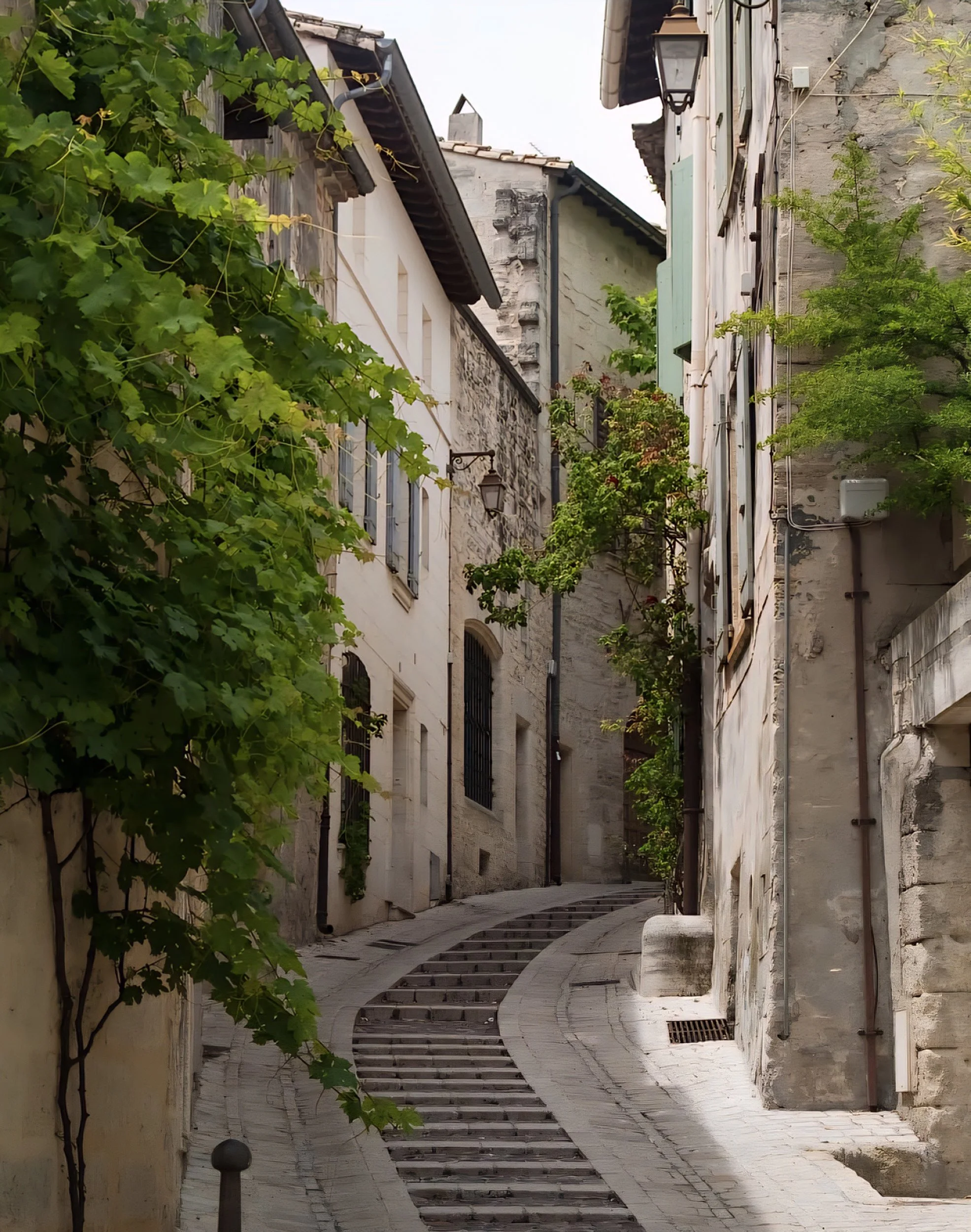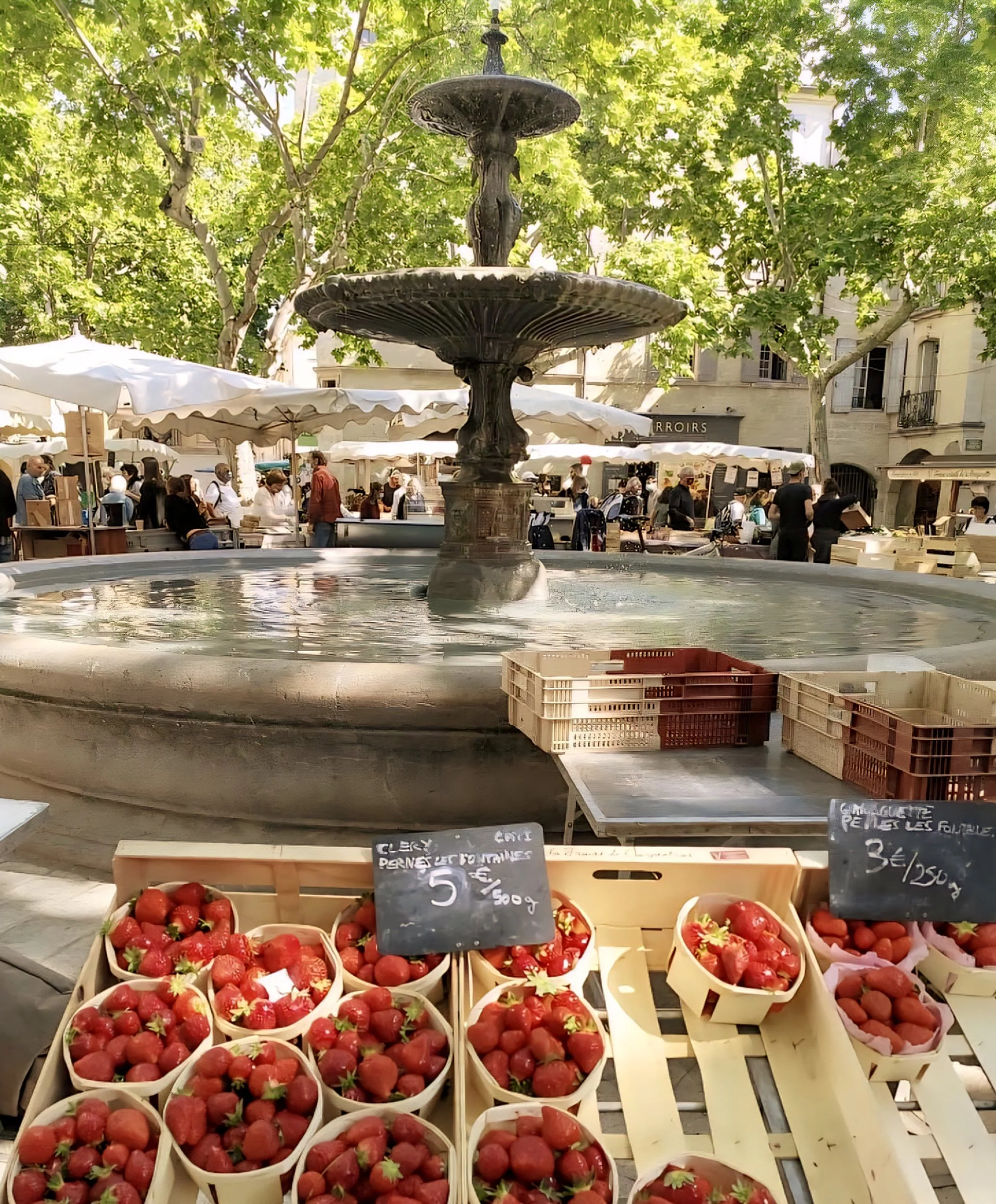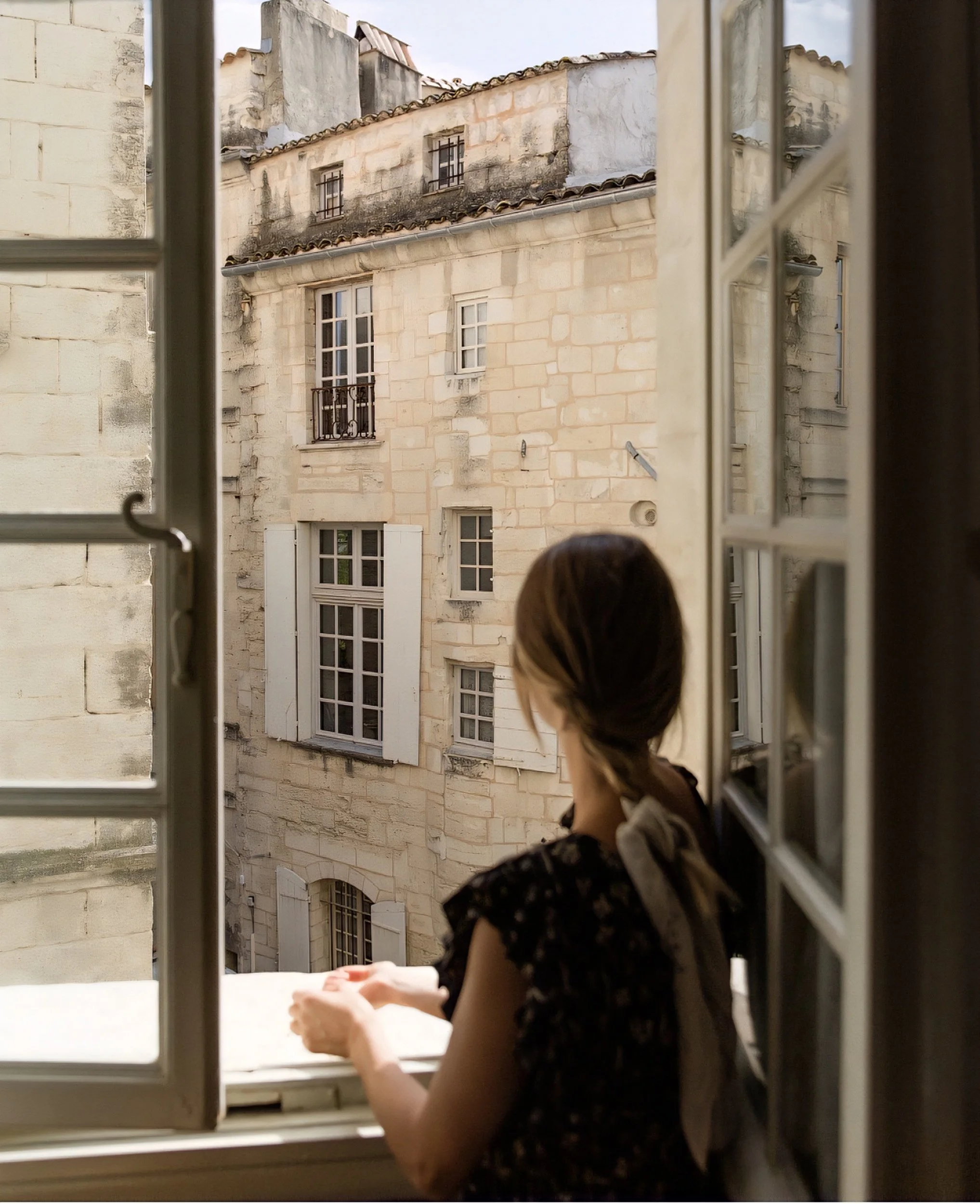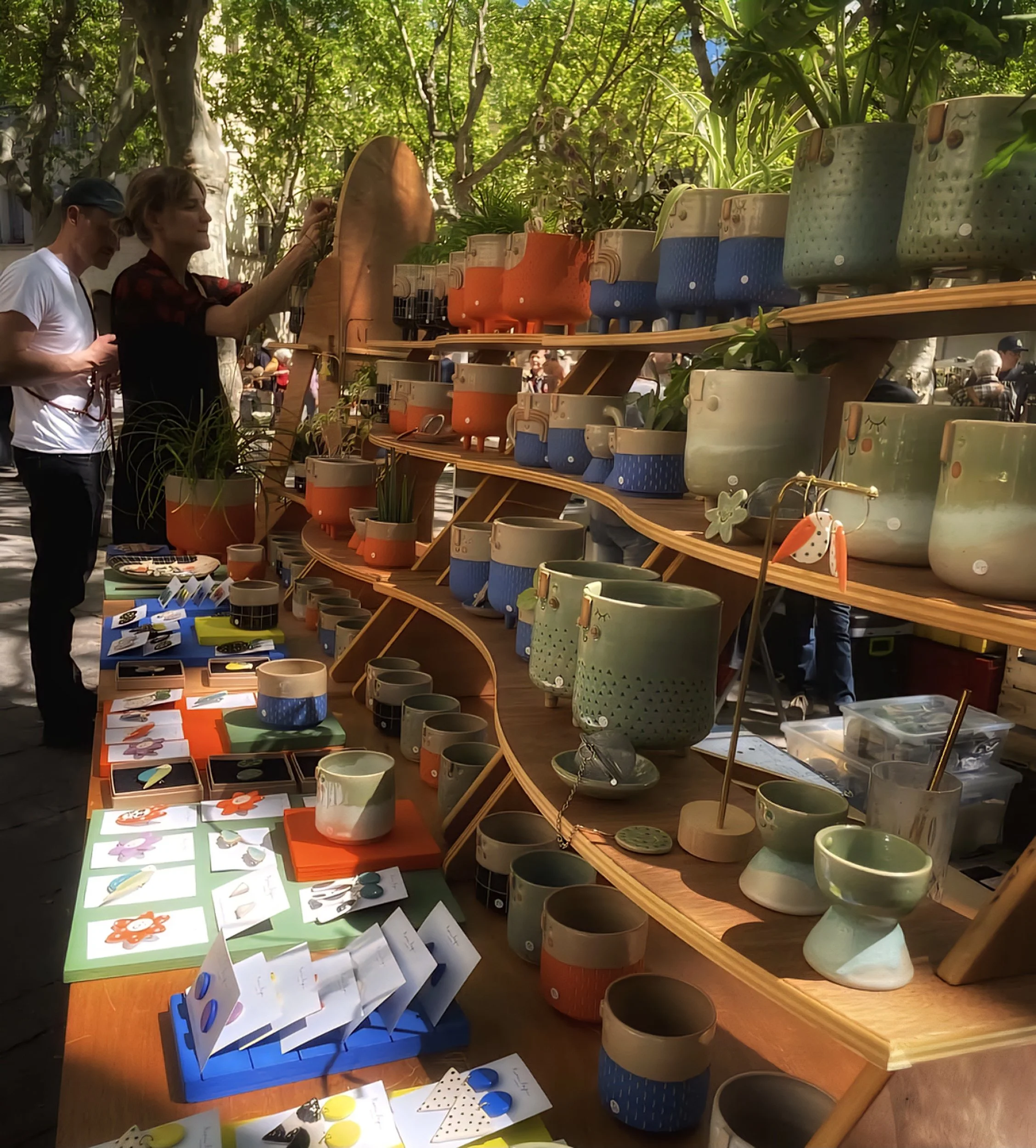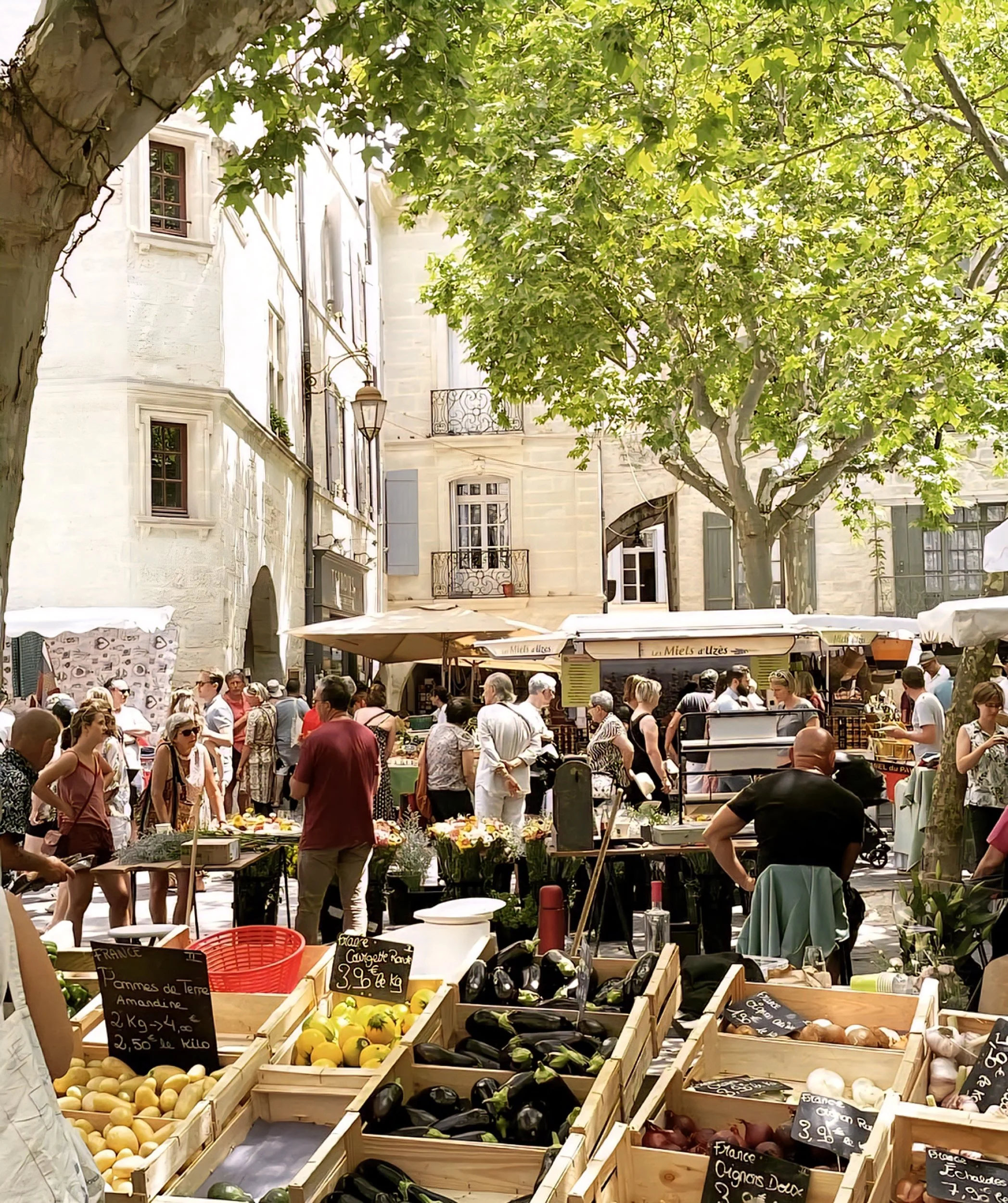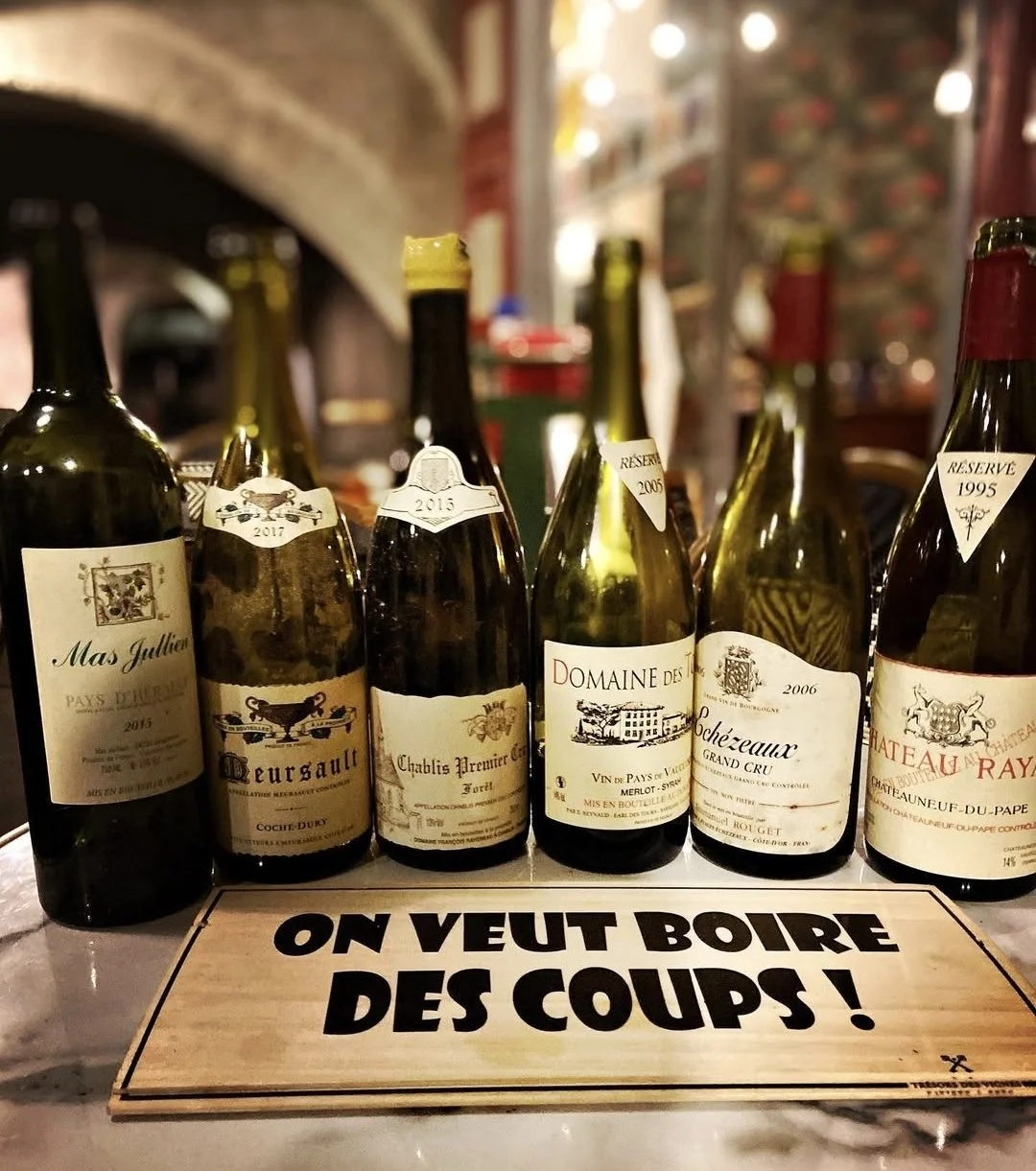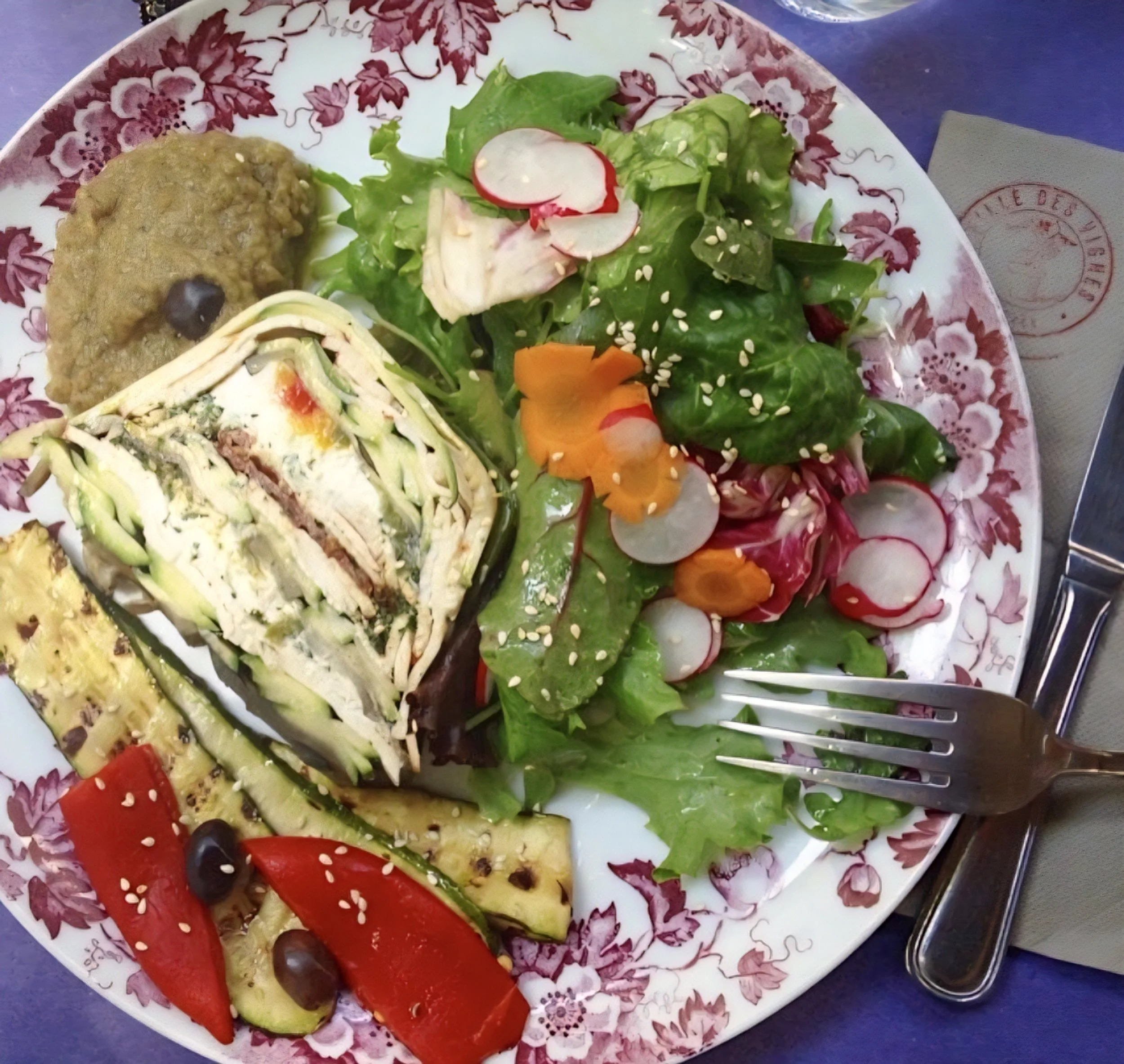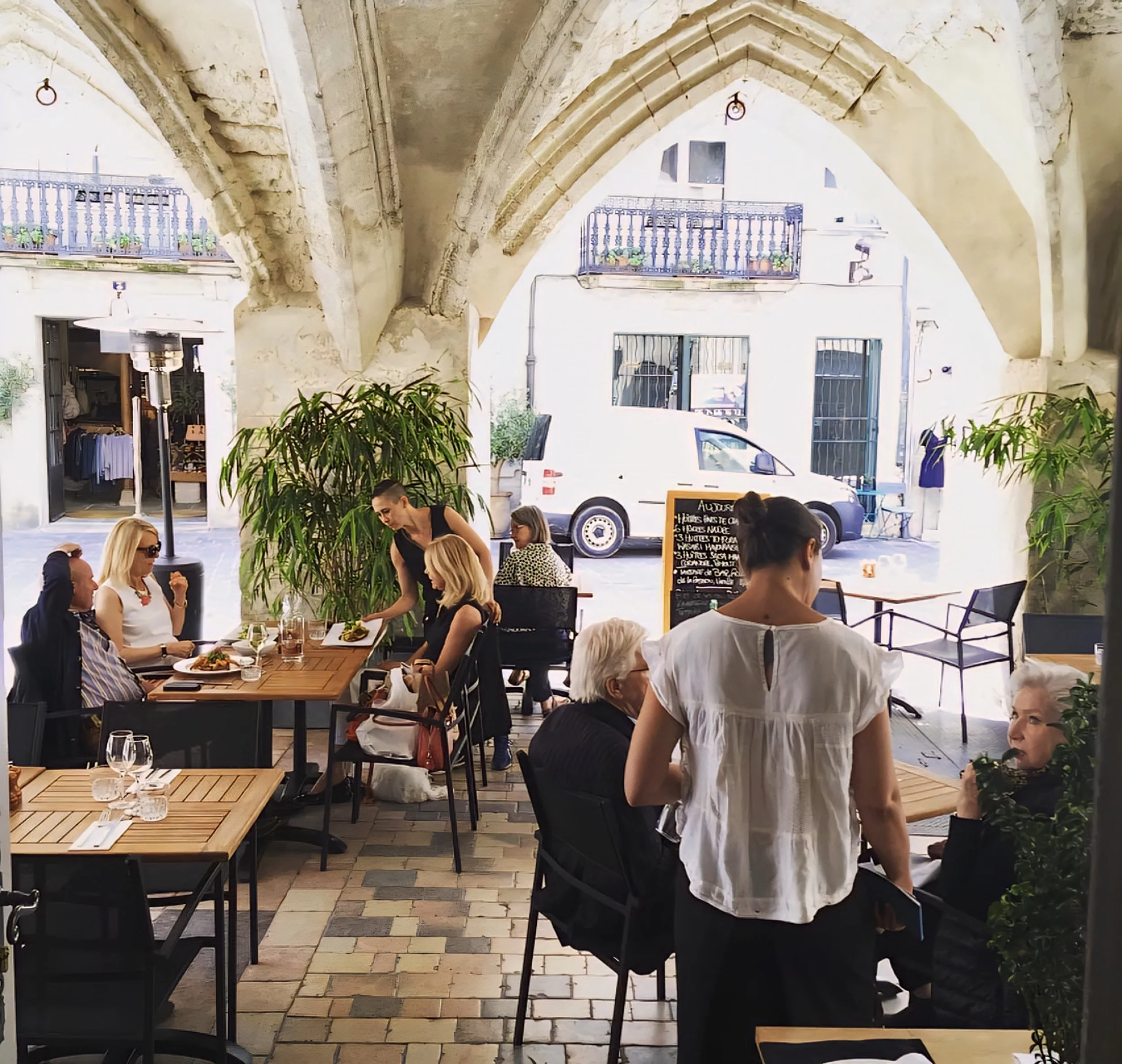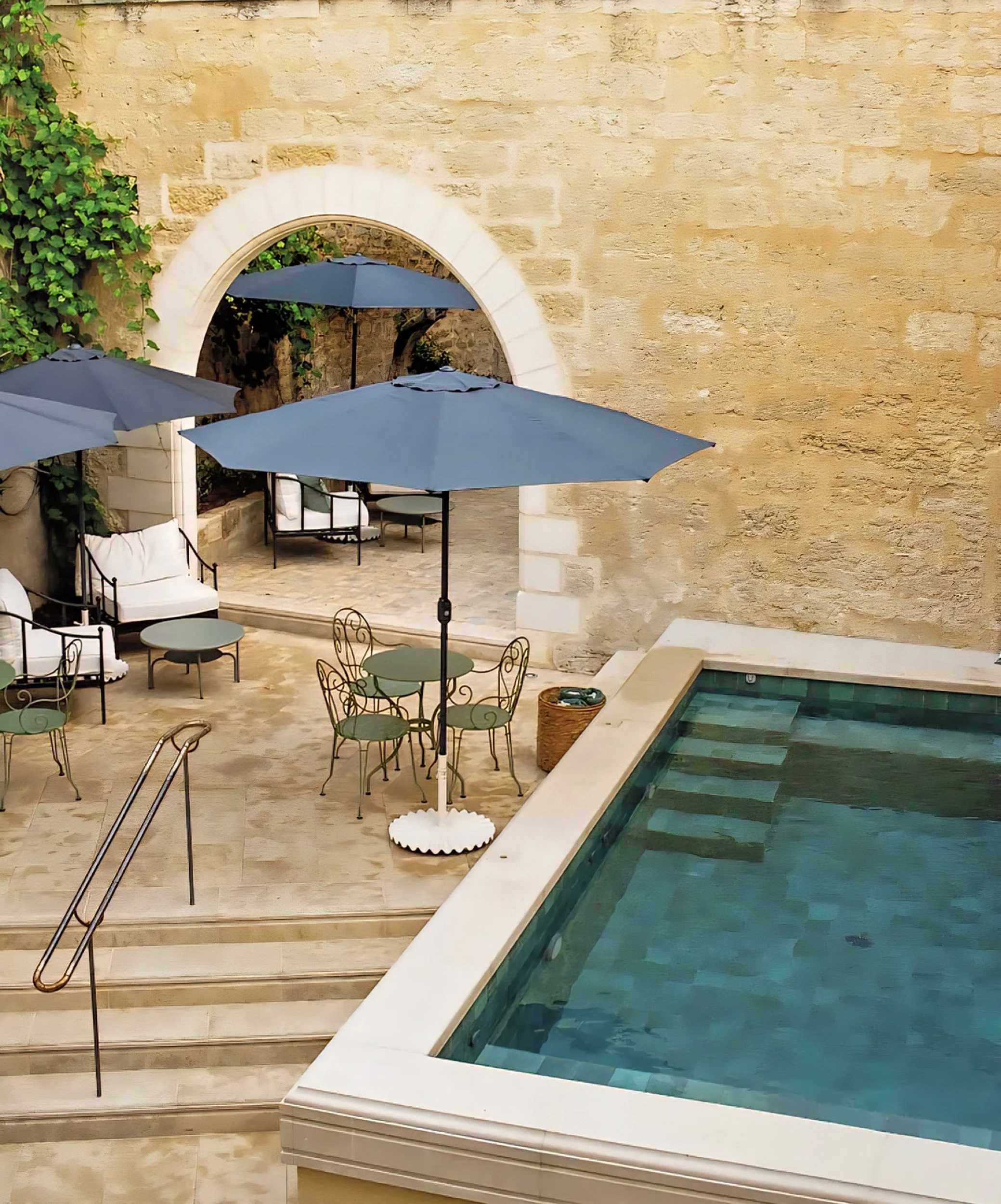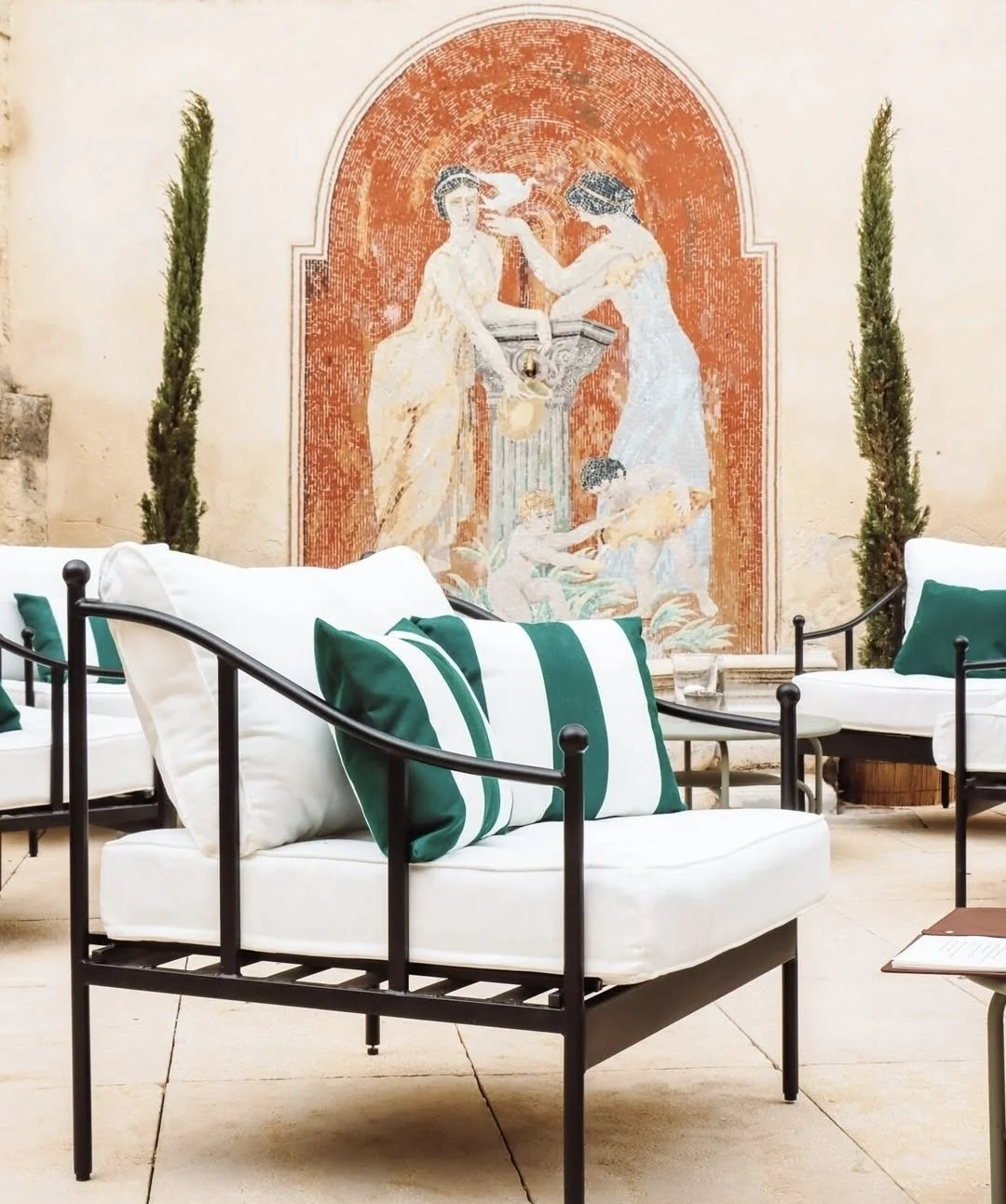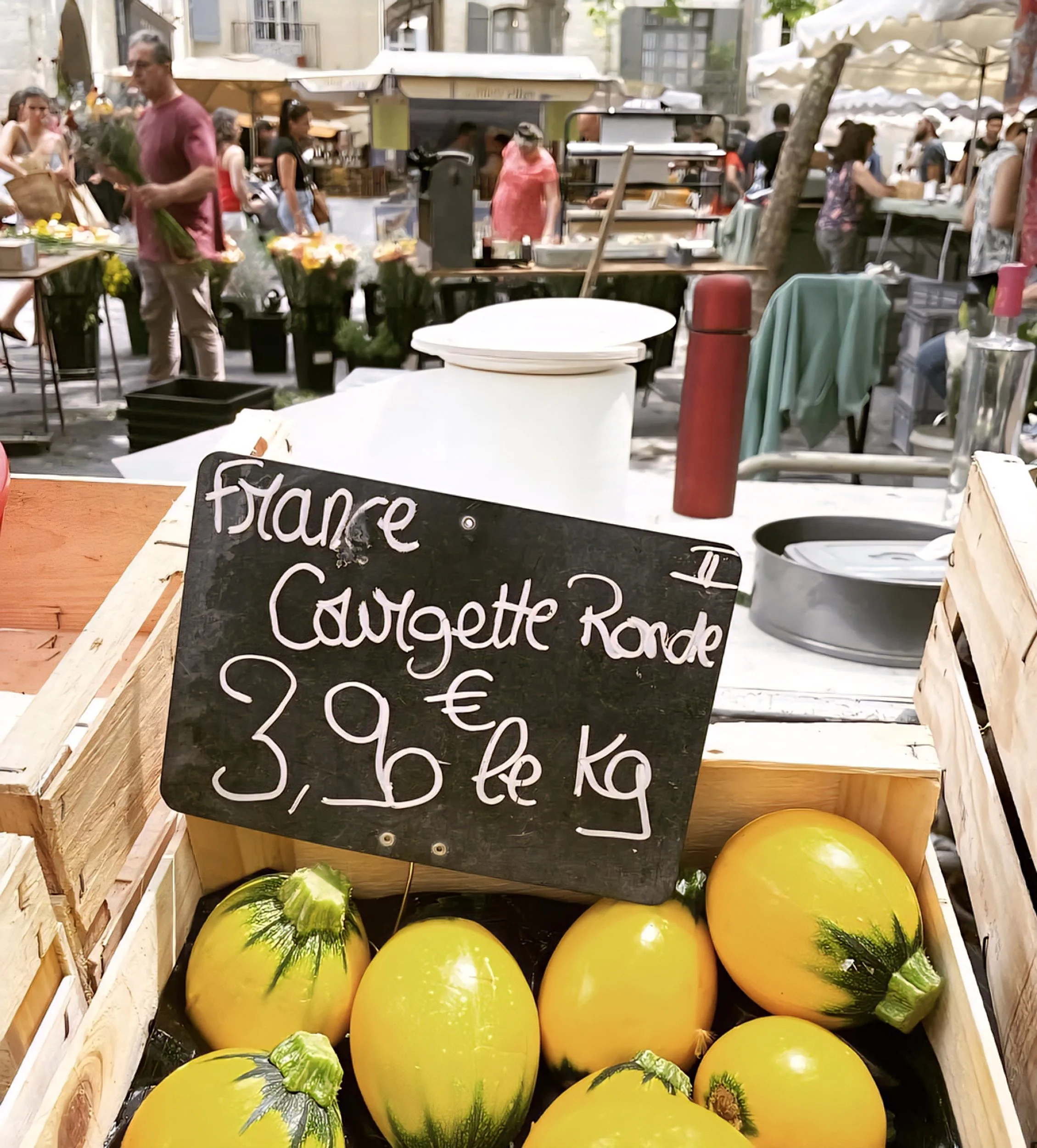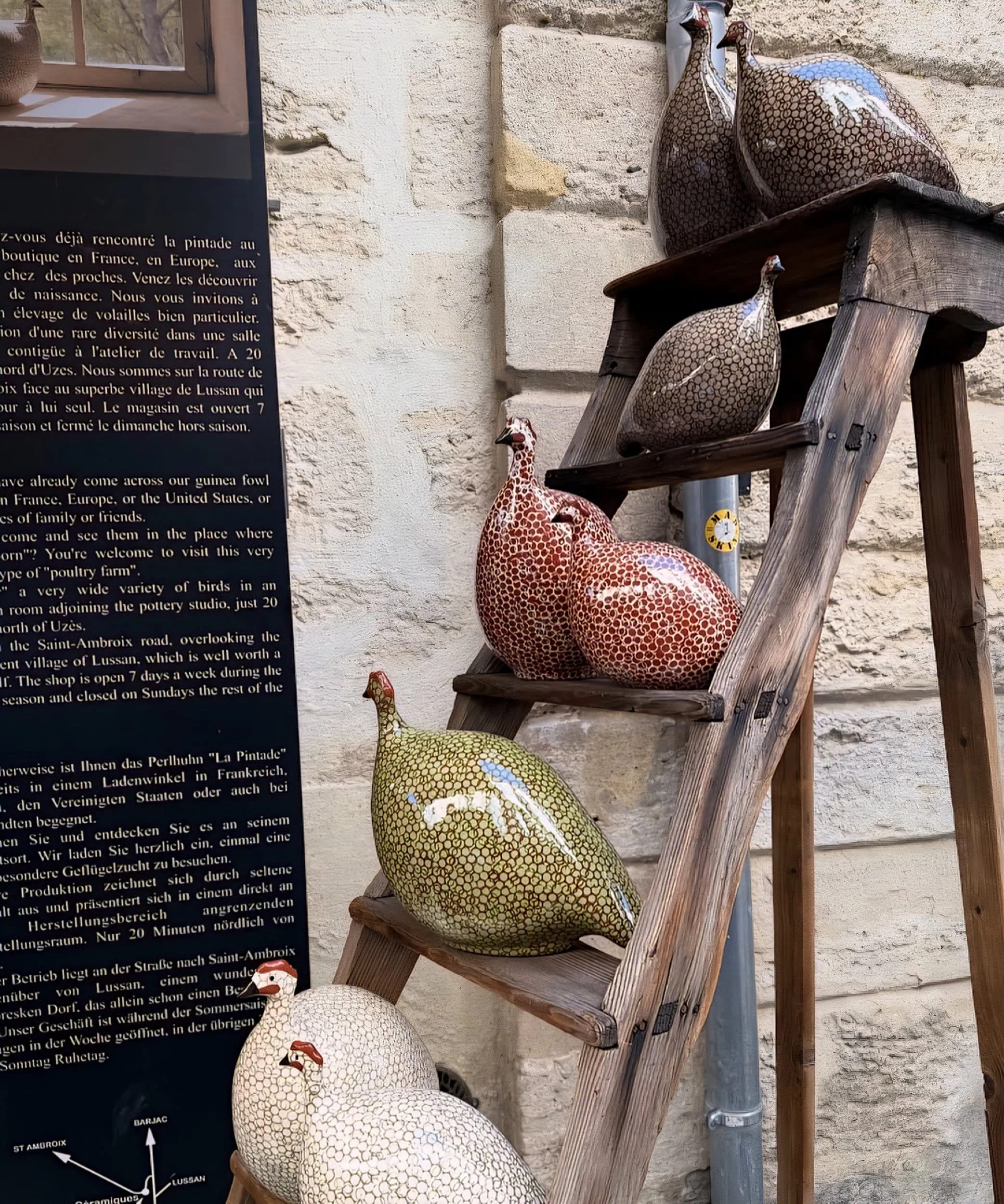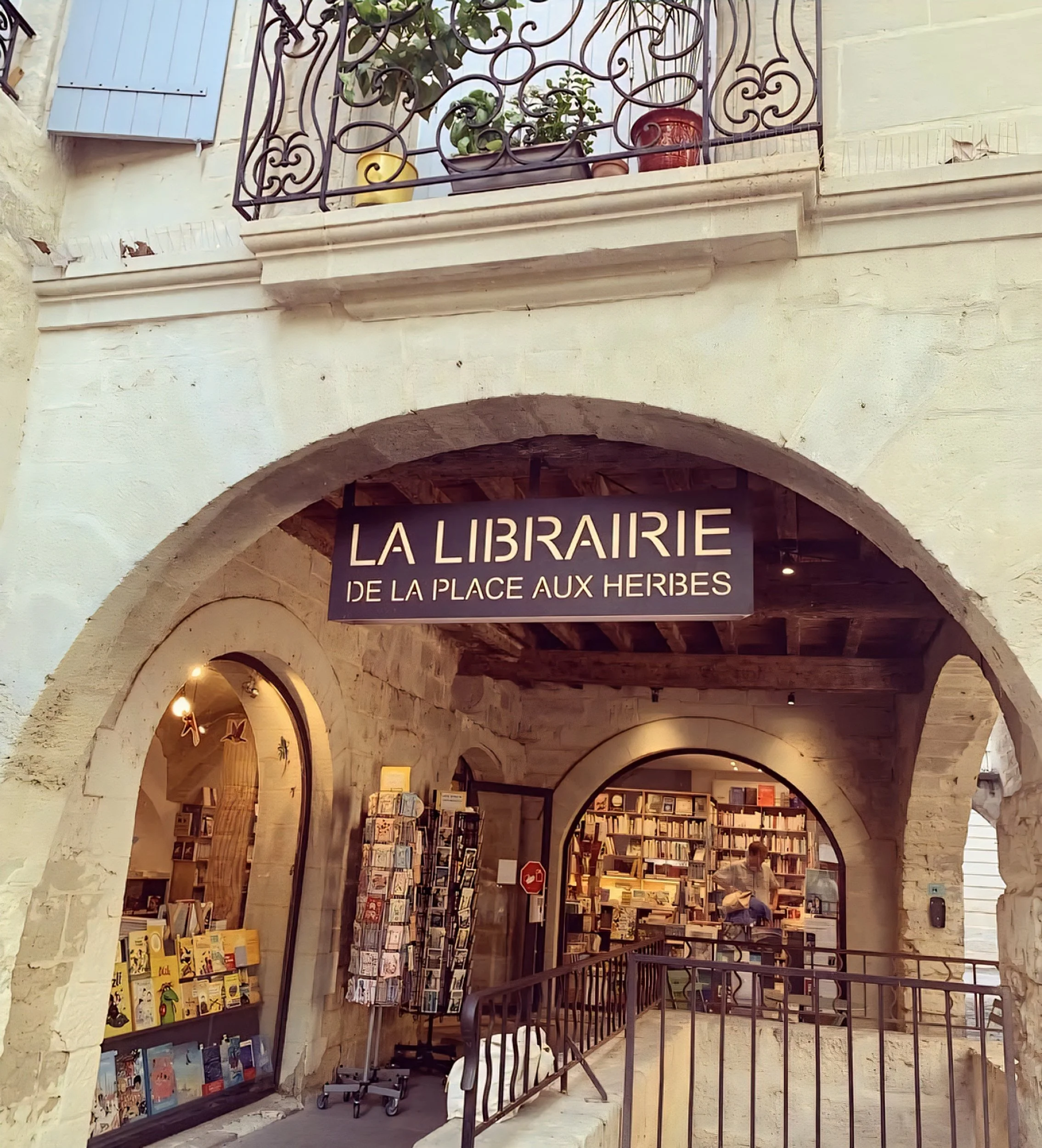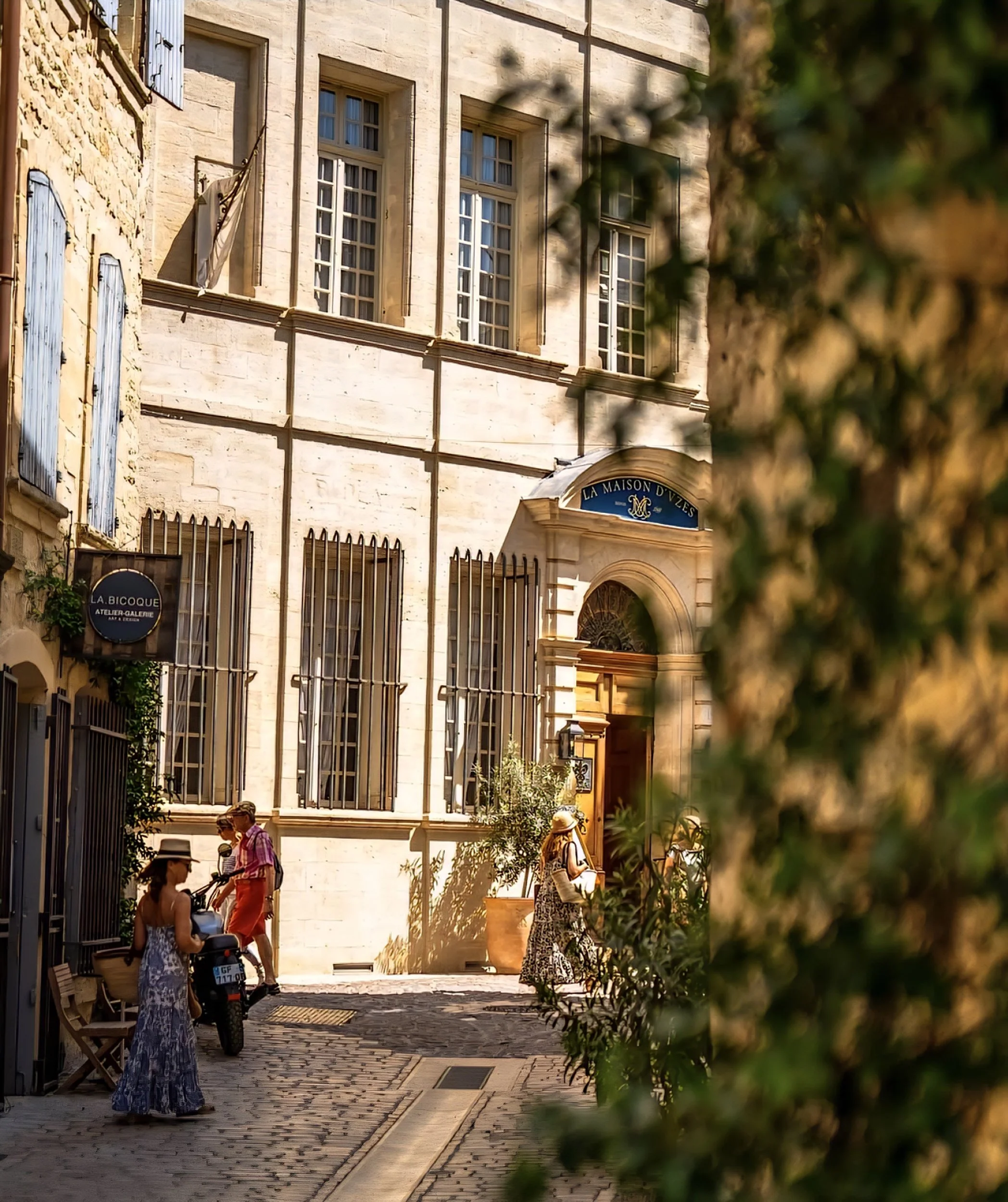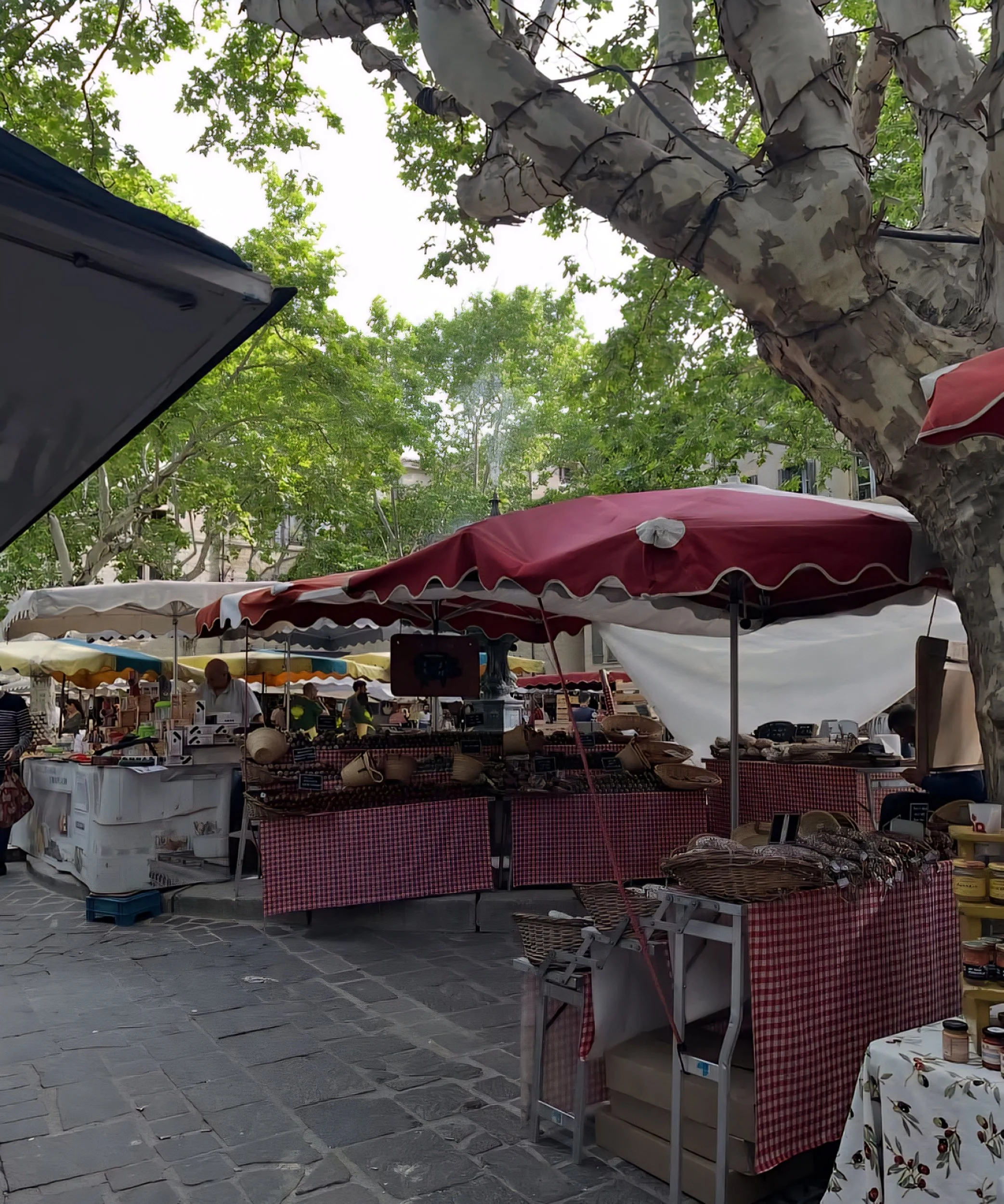Autumn in Uzès: Markets, Vineyards, and Cozy Stays in Southern France
Uzès isn’t the kind of place that makes it onto everyone’s first trip to France. It doesn’t have a major train station, big-name museums, or famous landmarks. But that’s exactly what makes it such a memorable place to be. If you’re the kind of traveler who’d rather trade crowds for real life (like market days, vineyard visits, slow walks through stone streets), Uzès quietly is exactly what you’ll love to explore.
Most people who know the name might associate it with the Pont du Gard or Roman history. But what makes Uzès special now isn’t just what it was; it’s how it lives today. On a Wednesday or Saturday morning, the square fills with locals shopping for cheese, vegetables, olive oil, or linen tablecloths. It’s not a show for tourists; it’s where life happens. Walk a few blocks away and the backstreets are calm, but never empty.
And there’s more going on than meets the eye. Uzès is a real town, not just a pretty stop. There’s a lycée, a year-round community, small galleries and ateliers, and an everyday culture that isn’t performed for outsiders. In autumn, it all slows down just enough to feel like you’ve stepped into something softer. Vineyards are wrapping up harvest, the light starts shifting, and the town moves into a calmer season.
The historic center is walkable and warm-toned, with worn stone buildings, shady arcades, and winding streets that invite detours. It’s the kind of place where you’ll lose track of time without ever feeling lost. Step just outside the town walls and you’re in vineyard country, with olive groves, walking trails, and villages that don’t make the guidebooks.
For travelers, Uzès is easy in all the right ways. You don’t need a car if you’re just staying in town, the bus from Nîmes drops you close to the center, and most of what you’re here for is within a short walk. Give it two or three days, and it starts to feel like somewhere you could come back to again. And probably will.
What makes Uzès worth visiting in autumn?
October and November are ideal months to be in Uzès. Daytime temperatures hover in the high teens to low 20s (Celsius), vineyards are in harvest or already resting, and the Wednesday and Saturday markets are still full of seasonal produce: wild mushrooms, new olive oil, late figs, chestnuts, and all kinds of cheeses.
Unlike summer, you’re not sharing the square with busloads of tourists. Cause it does get very busy here in the summer. This time of the year, it’s mostly locals doing their shopping, expats returning from summer travels, and the occasional traveler who stumbled on Uzès by chance. Which is often how it begins.
Give it two or three days here, and it starts to feel like somewhere you’d want to stay a little longer. Especially if you like real places that move at a human pace.
Things to do in Uzès in autumn:
Spend a market morning at Place aux Herbes
If you’re in Uzès on a Wednesday or Saturday morning, the market at Place aux Herbes is non-negotiable! It’s not just one of the best autumn markets in southern France - it’s like a window into how life works here.
People aren’t rushing. They’re chatting with the same vendors they’ve been buying from for years. They’re slowly picking out pears for dessert, bread for lunch, maybe a block of Pélardon or a bottle of local oil. You’ll see tourists too, of course, but they’re the kind who’ve rented a place for the week and are trying to figure out what to cook with those mushrooms they just bought.
What makes the market so special in autumn is that it doesn’t feel like a seasonal event. It just keeps naturally going. The stalls shift with what’s growing. The air smells like roasted chicken and thyme. Local winemakers sometimes set up stands, and there are usually a few brocante vendors with old books, linens, or enamel signs.
If you’re not buying anything, that’s fine too. Walk through. Observe. Then find a table at one of the cafés tucked under the arcades and order a café crème or a glass of wine. There’s no rush. You’re already doing the best thing there is to do here.
Walk to the Eure Valley
One of the easiest and most rewarding things to do in Uzès in autumn is to follow the old footpath down to the Vallée de l’Eure. It’s a short walk (maybe ten minutes from the edge of town) but it drops you into a completely different landscape: riverside paths, mossy ruins, and open green spaces where locals walk their dogs or sit with a book.
This is where the Romans sourced the water for Nîmes, and traces of the original aqueduct still line the path. It’s not a big-ticket site, and that’s what makes it so worth doing. You don’t need to be on a tour. Just walk, follow the path along the water, and go as far as you feel like. Bring a sandwich or something from the market and make it a picnic.
In October, the trees start to turn, and the leaves drift into the river. It’s quiet except for birds, the wind, and maybe someone passing by on a bike. For a deeper walk, follow the signs toward the Sentier de l’Aqueduc - part of the original aqueduct route. It eventually connects all the way to the Pont du Gard, but you don’t need to do the whole thing to get the feeling of it.
Make a day trip to the Pont du Gard
Even if you’ve seen photos, nothing really prepares you for standing underneath the Pont du Gard: a 2,000-year-old Roman aqueduct that still looks as solid and graceful as ever. It’s one of the most impressive Roman structures in Europe, and it’s just a 25–30 minute drive from Uzès.
In autumn, the whole site changes. The crowds drop off, the light gets better for photos, and the river is calm and clear. You can walk across the upper level of the bridge, follow trails along the Gardon River, or sit at one of the stone viewpoints and just take it all in.
There’s also a visitor center and museum, which are worth visiting if you’re curious about how the Romans managed to build something this complex - and why it’s still standing. But you don’t need to rush it. Bring a picnic or something from the Uzès market and stay a while.
If you’re not driving, check in with the Uzès tourist office. They can help with seasonal bus schedules, or you can look for day tours that include a stop at the bridge and nearby villages like Collias or Remoulins.
Taste wines from the Duché d’Uzès wine region
The Duché d’Uzès AOP is one of the younger appellations in France (officially recognized in 2013), but the area’s winemaking traditions go back centuries. Autumn is one of the best times to visit local producers… not just because the harvest is winding down, but because things are a bit slower, and conversations last longer.
If you have a car, head out to Domaine Deleuze-Rochetin, just ten minutes away, where tastings are relaxed and unhurried. The winemaker or staff will often pour directly for you and explain how their organic wines evolve from one vintage to the next. You don’t need to book a formal tour - just show up during open hours (though a call ahead doesn’t hurt, especially outside summer).
Other low-key stops include Domaine Grand Chemin, which produces very drinkable reds and is usually open for casual tastings, and Mas des Volques, whose more structured wines are worth trying if you prefer fuller-bodied styles.
Without a car? Walk over to La Cave du Duché, a small wine shop on a side street near Place aux Herbes. The owner knows most of the local winemakers personally and will likely steer you toward bottles you won’t find on supermarket shelves! Ideal if you’re staying a few nights and want something to open in the evening.
Visit Saint-Quentin-la-Poterie
Saint-Quentin-la-Poterie isn’t just a pretty village with a few potters - it’s a working ceramics community with roots going back to the Middle Ages. For slow travelers, it’s one of the most rewarding places to visit near Uzès.
Even in autumn, most of the studios are open during the day (though keep in mind many close between 12–2 for lunch). You can walk the “Chemin des Potiers”, which is a loop through town that connects several workshops - each with their own style. Some focus on traditional Provençal clayware, while others lean more contemporary.
One small detail that often gets missed: head to the Terralha Contemporary Ceramics Center (it’s small but thoughtfully curated) and ask if there are any upcoming exhibitions or artist talks. Many potters host mini vernissages or open studios in October, especially on weekends, but they’re usually only advertised locally.
If you're visiting on a Friday, the village market is worth a stop too. It’s much smaller than Uzès, but has a more local feel - produce, honey, bread, and sometimes handmade baskets or textiles.
Where to eat and drink in Uzès
The food scene in Uzès isn’t trendy in any way, but that’s part of the charm. You won’t find many places with big Instagram followings or chef bios on the menu. What you will find is a handful of cafés and restaurants that feel genuinely local. The kind of places where you’re more likely to hear French spoken at the next table than English, and where service is relaxed in the best way.
Most of the good spots are small, and it’s always worth making a reservation if you’re going out on a Friday or Saturday night. In autumn, tables fill up with locals - especially once the cooler weather brings everyone back inside.
Here are a few personal standouts:
Terroirs
Right off Place aux Herbes, but not trying to be seen. Terroirs is part épicerie, part wine bar, and part restaurant, with a tight menu that leans into whatever is seasonal and local. It’s the kind of place where you might order three small things (a tart, a salad, a bit of charcuterie) and share a bottle from the wall of natural wines. It’s open for lunch and dinner, and it’s especially nice on a quiet weekday when you’ve had a slow morning and want something unfussy but really good.
Le Comptoir du 7
This is one of those places that keeps getting recommended for a reason. The food is thoughtful without being fussy, and the service is warm but never over the top. They do a fixed-price lunch menu that changes often and is really good value for the quality. In autumn, the dishes shift with the season: think pumpkin velouté, game, lentils, local cheeses. Dinner feels like more of an occasion, but still casual enough that you don’t need to dress up.
La Fille des Vignes
Tucked down a quieter street just outside the main square, this is one of those wine-forward places that feels like a find. They serve local wines by the glass or bottle (ask them what’s open - they’ll let you taste), and small plates designed to go with them. It’s not really a full dinner spot, more of a place to settle in for a couple of hours with friends or a book. Ideal for a solo traveler or an early evening stop before a later meal.
Ten
Tiny, modern, and surprisingly inventive. This place seats maybe a dozen people and doesn’t feel like anywhere else in town. The menu is short, changes often, and leans plant-based without being labelled as such. If you want a meal that feels a bit lighter or just different from the usual French bistro fare, this is the one to try. Bonus: they do great coffee during the day too.
Café de l’Esplanade
Yes, it’s a bit of a local institution… and yes, it’s also where you’ll find a mix of expats, regulars, and market-goers. But there’s something comforting about knowing it’ll always be open, that the espresso will be decent, and that the terrace catches the afternoon sun just right in October. It’s good for a mid-morning coffee or a simple glass of wine after a long walk. Don’t expect anything gourmet - come for the atmosphere.
L’Artemise (for a splurge)
If you're staying a few nights and want to plan one “big” dinner, book a table at L’Artemise. It's a bit outside of town (you’ll need a car or taxi), but the setting is stunning (an old stone building surrounded by trees and views) and the food is ambitious but rooted in the region. Definitely not casual, but worth the experience if you're celebrating something or just in the mood to go all in.
Where to stay in Uzès in autumn
Uzès has exactly the kind of places that slow travelers look for: small-scale, independently run, full of character, and quietly tucked into the town’s rhythm. Whether you're staying two nights or a full week, there are a few standout spots that feel more like a home base than a hotel.
Autumn is a great time to visit because availability opens up, prices drop slightly from summer, and hosts have more time to chat or offer local recommendations.
A strong choice is Maison d’Uzès, especially if you’re looking for a boutique hotel with a few more amenities. It has a small spa, an on-site restaurant, and views over tiled rooftops from the upper floors. The building is listed as a historical monument, and the restoration has kept its soul intact.
For something a bit more tucked away, La Maison Rouge d’Uzès offers rooms and apartments that blend contemporary design with old stone walls and vintage tile. It works well for longer stays or travelers who want a self-catering setup without losing the charm.
If you'd prefer a countryside feel, Château d’Arpaillargues is just outside town and gives you a more pastoral setting with big trees, sprawling grounds, a pool if you're lucky with the weather. It’s still close enough to pop into Uzès for dinner or the market, but you’ll feel like you're in a different world.
And if you're looking for a place to settle for a full week or more, autumn is the time to browse seasonal gîtes or short-term rentals. Many are walking distance to the center, often run by locals or expats who’ve made Uzès home, and come with everything you need to shop the market and cook like a local.
What to eat in Uzès in autumn
If you like food that follows the seasons, autumn in Uzès is a great time to visit. The market reflects exactly what’s happening in the surrounding countryside: no imports, no pretense. Just the ingredients locals actually cook with.
Here are a few things worth looking out for when you’re wandering the market or reading a menu:
Cèpes and wild mushrooms
You’ll see them on tables in the Wednesday market, often just a few piles at a time. Cèpes (porcini), chanterelles, and other forest mushrooms are foraged in nearby woods and sold loose by weight. If you’re staying somewhere with a kitchen, buy a handful and cook them simply in butter with garlic and parsley - that’s what locals do. Or look for them featured in omelets, risottos, or stews at local bistros.
Pélardon (local goat cheese)
This little disc of goat cheese is made in the Cévennes and sold all over the Gard region. Some are fresh and mild, others are more aged and stronger - wrapped in chestnut leaves or rolled in herbs. The cheese stalls at the market will usually offer a sample if you ask. It’s especially good with a drizzle of local honey and a slice of crusty bread.
New season olive oil
Autumn is when the first pressings of olive oil start to appear. It’s cloudy, green-gold, and more peppery than the mass-produced stuff you get in supermarkets. Some of the producers at the market will have tasting bottles open, so just dip a piece of bread and try. If you’re flying home, you can usually buy small tins that travel well.
Autumn fruit
Think plums, figs, late-season melons, and crisp apples from nearby orchards. You’ll also find bunches of muscat grapes - sweet, fragrant, and often eaten as-is or added to tarts. These show up at stalls that look like actual farms, not wholesale resellers.
Chestnuts
You might spot them raw or roasted depending on timing. The Cévennes mountains just north of Uzès are known for their chestnut forests, and you’ll sometimes see local dishes that incorporate chestnut flour or purée. Some bakeries and pastry shops will also feature chestnut-based desserts - usually subtle and not overly sweet.
Truffles (later in the season)
If you’re here in late November, it’s the very beginning of black truffle season. Uzès has its own small truffle market in winter, but you may already see them appearing in shops or on menus toward the end of autumn. They’re often shaved over eggs, pasta, or potatoes - nothing complicated, just enough to taste what makes them so prized.
These aren’t the kinds of foods people fly in for, but that’s exactly the point. They’re part of everyday life here, and tasting them in season, in the place they come from, is part of what makes slow travel so satisfying.
Artisan shops and local produce in Uzès
One of the best things about visiting Uzès in autumn (or really any time of year) is how easy it is to shop local without feeling like a tourist. The town is full of independent shops that focus on regional products: handmade pottery, natural wines, seasonal food, and traditional textiles. If you’re looking for meaningful souvenirs or simply want to browse shops that reflect the local culture, Uzès delivers big time!
Here are some of the best types of shops to explore if you want to take a piece of southern France home with you.
Pottery shops in Uzès and nearby
While the nearby village of Saint-Quentin-la-Poterie is famous for its ceramics, you’ll also find excellent pottery shops right in Uzès. Many are hidden along side streets near Place aux Herbes, marked only by small signs or open wooden doors.
Look for workshops that sell functional pieces (bowls, pitchers, olive dishes) made with traditional southern French glazes. Others lean more contemporary, with matte finishes and clean lines. Almost all are made on-site, and it’s common to meet the potter or artisan while browsing. Prices are fair and often lower than in more touristy towns.
For a wider selection and a deeper dive into the region’s ceramic tradition, plan a half-day trip to Saint-Quentin-la-Poterie, just 10 minutes away. The village has over 20 working studios and a dedicated pottery museum.
Where to buy local food products in Uzès
Outside of market days, you’ll still find plenty of places to buy regional food in Uzès. A handful of épiceries and specialty food shops around the old town focus on produits du terroir - high-quality, locally sourced items like:
new season olive oil from nearby mills
goat cheese (especially Pélardon)
chestnut flour from the Cévennes
local honey and fig jam
Provençal herb mixes
handmade nougat and calissons
Shops like Maison Papilles (just off the main square) carry a well-curated mix of these products. The owners are usually happy to talk about the producers they source from or help you build a travel-safe food gift. Some places also carry vacuum-sealed charcuterie or cheeses that are easier to take home
Wine shops with bottles from the Duché d’Uzès region
If you don’t have time to visit vineyards outside town, Uzès has a few small wine shops where you can try or buy local bottles. Ask for wines from the Duché d’Uzès AOP - a protected regional label with some excellent small producers. Many shops focus on organic and biodynamic wines, and will happily make suggestions based on what’s in season or what you’re eating that night.
Some also offer tasting flights or small by-the-glass pours, especially in autumn when things are less busy.
Textiles and home goods made in France
For gifts or home souvenirs, Uzès has a few understated shops that sell traditional French linens, woven baskets, beeswax candles, and kitchenware. These aren’t trendy, high end boutiques - more like quiet, well-made places that feel rooted in everyday life.
Look for items like:
cotton or linen tablecloths in muted tones
rustic bread bags or aprons
olive wood utensils
soaps from Marseille or nearby producers
Everything is practical and well-made. The kind of thing you’ll actually use once you’re home.
How to get to Uzès without a car
One reason Uzès has stayed relatively under the radar (in the best possible way) is that it’s not directly on the train line. But getting there by public transport is still very doable, especially if you’re coming from larger hubs like Nîmes, Avignon, or Montpellier.
Here’s how to plan it:
From Nîmes to Uzès by bus
The most direct route is to take the train to Nîmes Centre and then transfer to the regional bus (Line B21) that runs between Nîmes and Uzès. The ride takes around 50–55 minutes and drops you at the Esplanade stop, which is just a short walk from the town center.
The bus is modern, comfortable, and used by locals - not a tourist shuttle. In autumn, it’s rarely crowded. You can buy tickets on board or via the liO Occitanie transport website.
From Avignon or Montpellier
If you’re coming from Avignon, there’s no direct bus, but you can take a train to Nîmes and then connect via the B21 bus to Uzès. The same goes for Montpellier - train to Nîmes, then bus. It’s a bit more roundabout, but still straightforward and scenic.
If you’re traveling with luggage, try to avoid tight transfers at Nîmes station. Give yourself a little breathing room between the train and bus - there are cafés nearby where you can wait if needed.
Renting a car for countryside trips
You don’t need a car to enjoy Uzès itself - the town is walkable, and the atmosphere lends itself to staying put. But if you want to visit vineyards, hilltop villages, or the Pont du Gard at your own pace, renting a car for a day or two can be worth it.
You can pick up a rental in Nîmes or Avignon and be in Uzès in under an hour. Once you're in town, there’s free parking near the ring road and a few paid lots closer in. Just keep in mind that during Saturday market hours, parking fills up fast.
Want to take this experience offline?
You can get our detailed Uzès Travel Guide here - packed with curated recommendations, seasonal tips, and everything you need to explore at your own pace.
Why Uzès is worth visiting in autumn
Uzès isn’t a town that tries to win you over. It just does what it does (market mornings, long lunches, slow evenings) and if you're into that kind of travel it quietly pulls you in.
In autumn, it gets even better. The light softens, the pace slows, and the things that make Uzès special come into sharper focus. It’s not about big sights or dramatic moment - it’s the way people shop at the market like it’s second nature, or how you can walk out of town and be surrounded by vineyards in ten minutes.
It’s the kind of place you could spend three days doing very little and still feel like you got it.
If you’re looking for somewhere in southern France that feels lived-in and local (especially in the off-season) Uzès makes sense. You don’t need to plan every hour. Just go, be there, and let the place take care of the rest.
More slow travel inspiration
If Uzès in autumn speaks to you (quiet streets, local food, cozy strolls) here are a few more places you might want to explore next. These guides go beyond the usual tourist routes and dive into real places, real food, and off-season rhythm:
✨ Parma Travel Guide: Slow Days, Local Plates, and a Side of Lambrusco
A northern Italian city where food is still part of everyday life. Markets, trattorias, and zero tourist gloss.
🍝 Bologna Food Guide: A Slow Travel Take on Italy’s Culinary Capital
If you loved Uzès for its food culture, Bologna will hit the same note - but with pasta, mortadella, and buzzing backstreets.
🌊 Off-Season in the Algarve: Portugal’s Coastal Serenity Without the Crowds
Ocean breezes, empty beaches, and quiet villages. The Algarve in autumn is a completely different experience - and a beautiful one.
🏛 Low Season in Tarragona: Roman Ruins, Empty Beaches, and Everyday Catalonia
Slow travel meets history on the Catalan coast. A great option if you're after soft light, long lunches, and zero tour groups.
🌿 Sifnos in Autumn: A Wellness-Oriented Slow Escape to the Greek Islands
A Greek island where things move slowly, the food is soulful, and the off-season feels like a secret.
FAQ: Planning a slow trip to Uzès in autumn
Is Uzès worth visiting in autumn?
Yes, and honestly, it might be the best time of year to go. The weather is still mild, the markets are full of seasonal produce, and the summer crowds are gone. It’s quiet, but not empty. You’ll still find shops open, cafés busy, and plenty to do - just at a calmer pace. If you prefer real life over peak-season bustle, autumn is the sweet spot.
Can you visit Uzès without a car?
Absolutely. You can take a train to Nîmes and connect to Uzès by regional bus (Line B21). Once you’re in town, everything is walkable, like the market, shops, cafés, and even some vineyard paths. If you want to explore deeper into the countryside or visit places like Pont du Gard or Saint-Quentin-la-Poterie, renting a car for a day or two is helpful, but not essential.
How many days do you need in Uzès?
Two or three nights is a good starting point. It gives you time to experience the market, wander the town, walk to the Eure Valley, and maybe do a short day trip. But if you’re traveling slow or want to settle in, Uzès is the kind of place that works really well for a longer stay- a full week wouldn’t feel too long.
What’s the weather like in Uzès in autumn?
October is usually sunny and mild, with daytime temperatures around 18–22°C (64–72°F). Evenings can be cooler, especially in November, so pack a jacket or layers. It’s a great time for walking and being outside - still warm enough to sit on a café terrace, but cool enough to enjoy a bowl of soupe de potiron.
What should I pack for a trip to Uzès in October or November?
Comfortable walking shoes (the streets are cobbled), layers for changing temperatures, something warmer for the evenings, and a market bag or tote if you plan on picking up food or local goods. If you’re staying in a rental with a kitchen, a small picnic knife and a corkscrew always come in handy.
Are the markets open year-round in Uzès?
Yes. The Wednesday and Saturday markets are year-round and are very much part of local life and they don’t shut down when summer ends. In autumn, they’re still full of local produce, cheese, olives, and regional specialties, but with fewer tourists. The atmosphere is more relaxed, and it’s easier to take your time browsing.
Are restaurants and shops open in the off-season?
Most places in Uzès stay open all year. Some smaller restaurants or shops may reduce their hours a bit in late November or early December, but in general, you’ll have no trouble finding great places to eat, shop, or sit with a coffee. If anything, autumn is when you get to enjoy them the way locals do - without the pressure of the high season.
What are the best day trips from Uzès?
Some easy day trips include:
Pont du Gard (25–30 mins by car): the famous Roman aqueduct - stunning in autumn light.
Saint-Quentin-la-Poterie (10 mins): a working pottery village with open studios and local galleries.
Collias (20 mins): great for riverside walks and quiet lunches.
Avignon or Nîmes (under an hour): if you want a quick change of scene or museum visit.
If you’re staying longer and have a car, you can also explore smaller villages in the Cévennes foothills.
Is Uzès good for solo travelers?
Yes, especially in autumn. It’s safe, walkable, and has the kind of pace that suits solo travel. You don’t need a packed itinerary to enjoy it. You can spend your days wandering, writing, eating well, and slipping into the local rhythm. Cafés are relaxed, and you won’t feel out of place dining or exploring on your own.
Is Uzès family-friendly?
Yes, especially if your kids are comfortable with slower-paced travel. There aren’t theme parks or major attractions, but that’s kind of the point. Families come here for walks in the Eure Valley, relaxed meals outside, and low-key day trips. The market is fun for kids (with food samples and little treats), and locals are generally very warm toward families.
Some guesthouses and rentals are better suited to families than others, so it’s worth checking in advance if you need space to cook or sleep multiple people.
Can you work remotely from Uzès?
If you're a digital nomad or working while traveling, Uzès is a surprisingly good base - as long as you’re not expecting a co-working scene. Wi-Fi in town is generally reliable, and many rentals or guesthouses cater to longer stays. Several cafés are laptop-friendly during off-peak hours, and no one rushes you out.
It’s quiet enough to focus, but lively enough that you won’t feel isolated. Autumn, in particular, is great: fewer distractions, a cozy pace, and enough daily routine to keep things grounded.
Is Uzès affordable compared to other parts of France?
It can be. Compared to places like Avignon, Aix-en-Provence, or the Luberon villages, Uzès tends to be better value - especially in the off-season. Rental apartments are often reasonably priced in autumn, and eating out doesn't have to be expensive if you shop the market and keep meals simple.
Public transport from Nîmes is cheap and reliable, and many of the best things to do (walking, markets, exploring) are free.
Is Uzès accessible for people with mobility issues?
Like many small towns in France, Uzès has cobbled streets and uneven sidewalks, particularly in the old town. That said, the main square and surrounding streets are mostly flat, and many cafés and shops have ground-floor entrances.
If accessibility is important, look for accommodations outside the historic core or on the edge of town where access is easier. It’s also worth emailing hosts in advance - many are happy to help or explain the layout of their property.
Do people speak English in Uzès?
Some do. Especially in shops, restaurants, or places that regularly serve visitors. But Uzès isn’t overly touristy, and many locals will appreciate even basic attempts at French. A few key phrases go a long way, and interactions are usually friendly even if you’re not fluent.
If you’re worried about the language barrier, don’t be. This is the kind of place where a smile, a “bonjour,” and a bit of patience are more important than perfect grammar.
Is Uzès a good base for a longer stay in France?
Definitely. Whether you’re staying for a week, a month, or more, Uzès works well as a slow travel base. There’s enough going on to keep you engaged (weekly markets, cultural events, nearby villages) but it’s small enough that you’ll quickly settle into a rhythm.
There are plenty of self-catering rentals, the town has all the essentials (supermarkets, pharmacies, bakeries), and it’s easy to take day trips without having to move around constantly. Autumn is especially appealing for longer stays as it's calm, affordable, and easy to feel part of the place.

